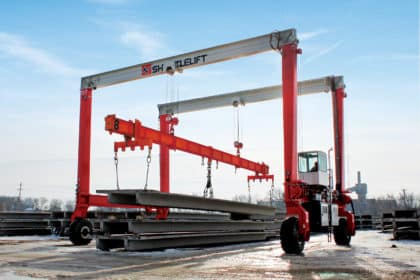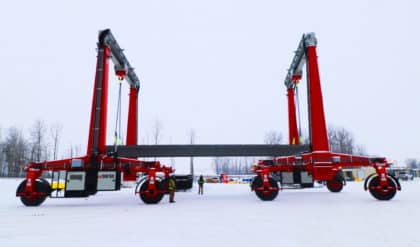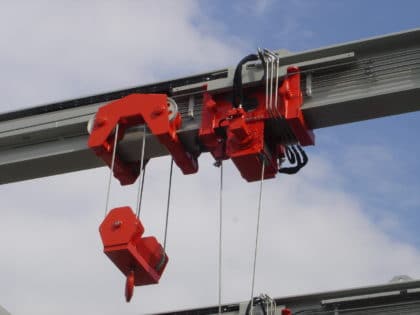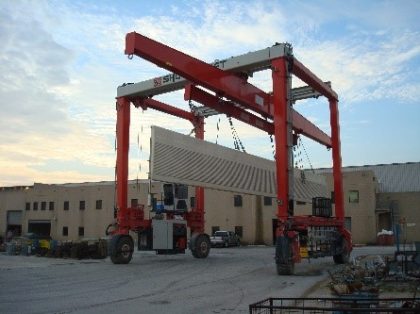Precast and pre-stressed concrete can come in many different configurations depending on the intended end use and the engineer’s design, so Shuttlelift offers four different models of industrial mobile gantry cranes to make sure customers get a perfect fit for any job. In Part 1 of our three-part series, we discussed how Shuttlelift rubber-tired gantry cranes could be used to handle precast girder sections and segmental pieces found in bridge work. Today, we are going to dive into some of the more common manufactured precast prestressed concrete components, double tees and wall panels used in parking garages and commercial buildings.
Double Tees
The double tee is primarily used as a floor and roof component and is an engineered precast concrete building section commonly found in modern parking structures and other commercial construction applications. The combination of maximum strength, faster construction, and unparalleled durability make it a cost-effective and unique solution for engineers and design-build teams around the world.
Typically, precast concrete double tees measure at a flange width of 8-12 ft. and an average span length of 25-55 ft.; however, today double tees continue to span longer distances than ever before – making it a challenge to find the right lifting solution to haul and maneuver them around the yard.


Wall Panels/Architectural panels
Precast wall panels are designed for structural integrity and architectural beauty – making them ideal for building warehouses, schools, offices, retail stores, and other commercial buildings. When flipping and moving precast wall panels, there is one RTG crane that will work best for your business.
The DB Series gantry crane offers a dual-trolley option which provides two hook points per trolley beam. Spacing can be fixed or have powered variable spacing to accommodate specific load pick points. This is often used where panels are stripped flat, and tipping of the product is not required.
When turning panels for storage or shipping, Shuttlelift’s patented powered APHS (or Auxiliary Powered Hoist System) is the perfect solution. This auxiliary winch system can act independently of the main hoists – making it easy to flip panels and other product while reducing the chance of damage to the panel or crane.


